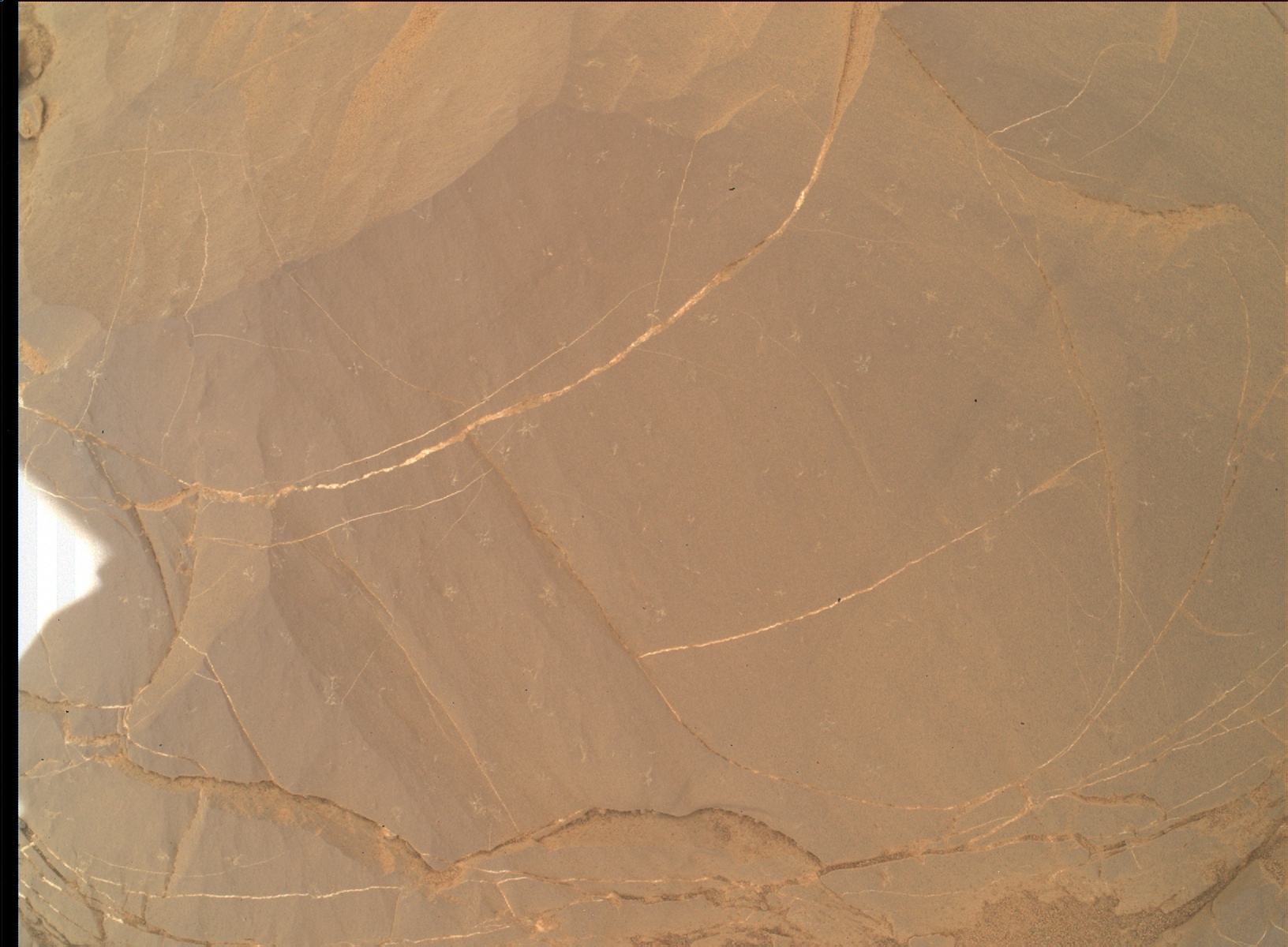March 22, 2018
Sol 2000: Roving for 2000 Martian Days
Today marks a milestone for Curiosity. Our trusty Martian rover has spent 2000 sols exploring Gale Crater helping to unravel the geologic history preserved in the rocks. We've observed a huge variety of past environments ranging from conglomerate rocks that indicate flowing surface water to mudstones that document a time when Gale crater contained an ancient lake. In today's plan, Curiosity is continuing its exploration of past environments preserved within Gale crater, further examining the Vera Rubin Ridge. Curiosity is continuing to make its way to the location where the strongest orbital signature of hematite is observed. In today's plan, we're carrying out remote sensing activities to examine layering in the rocks, as well as contact science on the target dubbed "Sgurr of Eigg" (just off the bottom of this image) to characterize the unit's chemistry and fine-scale morphology. We'll continue these types of activities over the weekend plan to refine our understanding of this workspace.
While some of us on the science team were busy planning activities for Curiosity's plan, many of the MSL science team members were busy attending the Lunar and Planetary Science Conference (LPSC). Today coincides with the majority of the MSL presentations discussing the new science being carried out by the team. In fact, I'm also attending LPSC but am taking a break to help plan Curiosity's activities from my hotel room at the conference center. It just goes to show, you can help drive a rover from almost anywhere!


